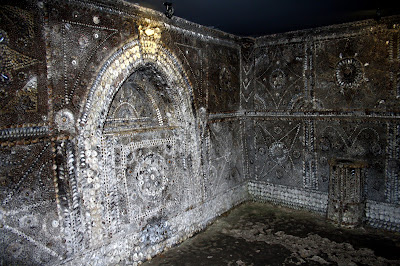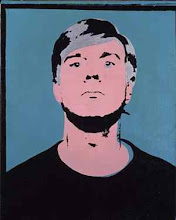This was my first visit to Margate, let alone the Turner Contemporary. First impressions, on stepping out of the station, were the high visual impact of the nineteen-storey tower block (Russell Diplock Associates, 1964) "with jazzily zigzagging sides" (John Newman (1976) The Buildings of England: North East and East Kent, p384) and the amplified, bluebottle-buzz of, what turned out to be, the 'Monarch of Margate Beach Cross' championship for motor bikes and quad bikes. A discreet sign welcomed us to Dreamland.
We made our way along the sea front to the harbour where the rectilinear boxes of the Turner Contemporary (David Chipperfield, 2008-11) loom behind the Regency, Droit House, sitting at the end of the Harbour Arm.
Entering the gallery I was thrilled to be greeted by Michael Craig-Martin's neon piece, Turning Pages.
 |
| Michal Craig-Martin, Turning Pages, 1975-2011 |
'[The commission] was intended by Margate as a commemorative gesture to the retiring librarian', [Craig-Martin] recalled, 'and they were looking for something like a bronze anchor'. But Craig-Martin decided instead to work with white neon on the brick wall above the building's entrance. He produced a simple outline image of an open book, its pages continually turning... The incoming librarian at Margate showed such scant respect for perpetuating his predecessor's memory that Turning Pages was allowed rapidly to slip into disrepair. Cork, Richard (2006) Michael Craig-Martin, London: Thames & Hudson, p39 (See, also, Craig-Martin talking about the piece here)The Carl Andre exhibition is excellent and comprises eight three-dimensional works plus a selection of pages of concrete poetry. What I love about Andre's sculpture is its absolute simplicity, directness and materiality. On the wall of the gallery Andre is quoted as saying, "My ambition as an artist is to be the 'Turner of matter'". Elsewhere he declared:
My work is atheistic, materialistic and communistic. It's atheistic because it's without transcendent form, without spiritual or intellectual quality. Materialistic because it's made out of its own materials without pretension to other materials. And communistic because the form is equally accessible to all men. David Bourdon (1966) "The Razed Sites of Carl Andre", in Gregory Battcock ed. (1968) Minimal Art: A Critical Anthology, London: Studio Vista, p107
 |
| Carl Andre, Timber Piece (Well), 1964/70 (Photo from gallery website) |
 |
| Carl Andre, Weathering Piece, 1970 (Photo from gallery website) |
Andre's metal floor sculptures are intended to be walked on… Moving over the square brings an awareness of the texture of the magnesium plates. Andre accepted that the surface of the work would be altered by visitors' footsteps, observing that it 'becomes its own record of everything that's happened to it'.It was a particular pleasure to see examples of Andre's concrete poetry. In these days of word processing the visual impact of these typewritten pages is almost like looking at old master drawings! The example below was not in the exhibition but is an 'illustration' of this work.
 |
| Carl Andre, Essay on Sculpture for E.C. Goossen (1964) and Conquest Display (1965); from Phaidon) |
The gallery is a splendid exhibition space with a terrific sea view; the concurrent exhibition, Rosa Barba: Subject to Constant Change, an investigation into the material properties of film was also very engaging.
 |
| Rosa Barba, Space-Length Thought, 2012 (Photo from gallery website) |
 |
| Shell Grotto, Margate |









No comments:
Post a Comment